Inversion of Biological Strategies in Engineering Technology: A Case Study of the Underwater Soft Robot
Abstract
1. Introduction
2. Related Works
3. Inversion Methods of Biological Strategies
3.1. Knowledge Framework Design
3.2. Inversion Process Assisted by Language Models
3.3. Process of Human Decision Making
4. Case Study
- (1)
- Tail Oscillation Propulsion Strategy
- (2)
- Exteroskeleton Friction-Driven Propulsion Strategy
- (3)
- Fluid Ejection Propulsion Strategy
- (4)
- Segmented Coordination Peristaltic Propulsion Strategy
- (5)
- Buoyancy-Modulated Displacement Strategy
4.1. Tail Swing Propulsion Strategy
4.2. Fluid Injection Propulsion Strategy
4.3. Autonomic Peristalsis Strategy
5. Conclusions
- (1)
- Using LLMs and traditional NLP models to rapidly process bionic texts;
- (2)
- Demonstrating optimal engineering strategy recommendations through multidimensional decision making in strategy selection;
- (3)
- Validating the inversion method’s effectiveness via three application cases. The results show that the inversion method enhances the efficiency and feasibility of bionic design.
Author Contributions
Funding
Institutional Review Board Statement
Informed Consent Statement
Data Availability Statement
Acknowledgments
Conflicts of Interest
References
- Jacquelyn, K.S.N. A Thesaurus for Bioinspired Engineering Design. In Biologically Inspired Design; Springer: London, UK, 2013; pp. 63–94. [Google Scholar] [CrossRef]
- Jacquelyn, K.S.N.; Robert, B.S. A computational approach to biologically inspired design. Artif. Intell. Eng. Des. Anal. Manuf. 2012, 26, 161–176. [Google Scholar] [CrossRef]
- Noah, P.; Jacquelyn, K.N. Understanding the Use of Bio-Inspired Design Tools by Industry Professionals. Biomimetics 2022, 7, 63. [Google Scholar] [CrossRef] [PubMed]
- Vandevenne, D.; Pieters, T.; Duflou, J.R. Enhancing novelty with knowledge-based support for Biologically-Inspired Design. Des. Stud. 2016, 46, 152–173. [Google Scholar] [CrossRef]
- Xuerui, L.; Xinggang, H.; Mei, Y.; Lin, Z.; Haoyue, G.; Luyao, W.; Xinying, L. A method of constructing an inspiration library driven by user-perceived preference evaluation data for biologically inspired design. Adv. Eng. Inform. 2022, 52, 101617. [Google Scholar] [CrossRef]
- Feng, S.; He, X. A review of biomimetic research for erosion wear resistance. Bio-Des. Manuf. 2020, 3, 331–347. [Google Scholar] [CrossRef]
- Alessio, G.; Zoë, R.; Vincent, B. What Does it Mean to Mimic Nature? A Typology for Biomimetic Design. Philos. Technol. 2023, 36, 65. [Google Scholar] [CrossRef]
- Sun-Joong, K.; Ji-Hyun, L. A study on metadata structure and recommenders of biological systems to support bio-inspired design. Eng. Appl. Artif. Intell. 2017, 57, 16–41. [Google Scholar] [CrossRef]
- Gülşen Töre, Y.; Roxana Moroşanu, F.; Nathan, C. User requirements for analogical design support tools: Learning from practitioners of bio-inspired design. Des. Stud. 2018, 58, 1–35. [Google Scholar] [CrossRef]
- Sarah, J.M.; Banafsheh, K.; Austin, M.G.; Thibaut, H.; Colleen, K.U.; Ariana, R.; Nicholas, W.; Julian, F.V.V.; Jacquelyn, K.S.N.; Peter, H.N. E2BMO: Facilitating User Interaction with a BioMimetic Ontology via Semantic Translation and Interface Design. Designs 2018, 2, 53. [Google Scholar] [CrossRef]
- Eliot, G.; Nicolas, M.; Améziane, A. Engineers’ and Biologists’ Roles during Biomimetic Design Processes, Towards a Methodological Symbiosis. Proc. Des. Soc. Int. Conf. Eng. Des. 2019, 1, 319–328. [Google Scholar] [CrossRef][Green Version]
- Frank, E.F.; John, T.B. Evolution and Bio-Inspired Design: Natural Limitations. In Biologically Inspired Design; Springer: London, UK, 2013; pp. 287–312. [Google Scholar] [CrossRef]
- Julian, F.V.V.; Olga, A.B.; Nikolaj, R.B.; Adrian, B.; Anja-Karina, P. Biomimetics: Its practice and theory. J. R. Soc. Interface 2006, 3, 471–482. [Google Scholar] [CrossRef]
- Jacquelyn, K.S.N.; Robert, L.N.; Robert, B.S.; Daniel, A.M. Function-based, biologically inspired concept generation. Artif. Intell. Eng. Des. Anal. Manuf. 2010, 24, 521–535. [Google Scholar] [CrossRef]
- Sunil, S.; Prabir, S. Biomimicry: Exploring Research, Challenges, Gaps, and Tools. In Smart Innovation, Systems and Technologies; Springer: Singapore, 2019; pp. 87–97. [Google Scholar] [CrossRef]
- Linli, L.; Fu, G.; Hao, L.; Jianfeng, G.; Xinjian, G. Digital Twin Bionics: A Biological Evolution-Based Digital Twin Approach for Rapid Product Development. IEEE Access 2021, 9, 121507–121521. [Google Scholar] [CrossRef]
- Jacquelyn, K.S.N.; Robert, L.N.; Marjan, E. Teaching Biomimicry With an Engineering-to-Biology Thesaurus. In Proceedings of the ASME 2013 International Design Engineering Technical Conferences and Computers and Information in Engineering Conference, Portland, OR, USA, 4–7 August 2013. [Google Scholar] [CrossRef]
- Ashok, K.G.; William, H. Multifunctional and domain independent? A meta-analysis of case studies of biologically inspired design. Des. Sci. 2021, 7, e24. [Google Scholar] [CrossRef]
- Negar, A.; Jean, R. An application of multi-criteria decision aids models for Case-Based Reasoning. Inf. Sci. 2012, 210, 55–66. [Google Scholar] [CrossRef]
- Zhonghang, B.; Lei, M.; Hsiung-Cheng, L. Green Product Design Based on the BioTRIZ Multi-Contradiction Resolution Method. Sustainability 2020, 12, 4276. [Google Scholar] [CrossRef]
- Mingzhi, Z.; Huijing, C.; Mingming, Z.; Caicai, L.; Teng, Z. Optimal design of aeroacoustic airfoils with owl-inspired trailing-edge serrations. Bioinspir. Biomim. 2021, 16, 56004. [Google Scholar] [CrossRef]
- Yong, Z.; Xiang, S.; Xufeng, Z.; Xiaojie, X.; Jun, W.; Peining, C.; Xuemei, S.; Huisheng, P. Flexible Color-Tunable Electroluminescent Devices by Designing Dielectric-Distinguishing Double-Stacked Emissive Layers. Adv. Funct. Mater. 2020, 30, 2005200. [Google Scholar] [CrossRef]
- Sun, F.; Xu, H.; Meng, Y.; Lu, Z.; Chen, S.; Wei, Q.; Bai, C. BERT and Pareto dominance applied to biological strategy decision for bio-inspired design. Adv. Eng. Inform. 2023, 55, 101904. [Google Scholar] [CrossRef]
- Majeed, A.I.; Ali, A.A. Fish locomotion modeling and simulation based on carp fish monitoring. In Proceedings of the 2016 Al-Sadeq International Conference on Multidisciplinary in IT and Communication Science and Applications (AIC-MITCSA), Baghdad, Iraq, 9–10 May 2016; pp. 1–6. [Google Scholar] [CrossRef]
- Xiong, X.; Wang, H.; Xu, H.; You, C.; Chen, S.; Wu, Y. A BIO-INSPIRED UNDERWATER ROBOT INSPIRED BY JELLYFISH. In Proceedings of the ASME/BATH 2023 Symposium on Fluid Power and Motion Control: FPMC 2023, Sarasota, FL, USA, 16–18 October 2023; pp. 189–196. [Google Scholar]
- York, C.A.; Bartol, I.K.; Krueger, P.S.; Thompson, J.T. Squids use multiple escape jet patterns throughout ontogeny. Biol. Open 2020, 9, bio054585. [Google Scholar] [CrossRef]
- Chen, S.; Xu, H.; Xiong, X.; Lu, B. An Underwater Jet-Propulsion Soft Robot with High Flexibility Driven by Water Hydraulics. In Proceedings of the 2023 IEEE International Conference on Robotics and Automation (ICRA), London, UK, 29 May–2 June 2023; pp. 2613–2619. [Google Scholar] [CrossRef]
- Xu, Q.; Liu, J. Dynamic Research on Nonlinear Locomotion of Inchworm-Inspired Soft Crawling Robot. Soft Robot. 2023, 10, 660–672. [Google Scholar] [CrossRef] [PubMed]
- Chen, S.; Xu, H.; Haseeb, F.; Fan, W.; Wei, Q. A pneumatic-hydraulic hybrid actuator for underwater soft robot swimming and crawling. Sens. Actuators A Phys. 2023, 356, 114284. [Google Scholar] [CrossRef]
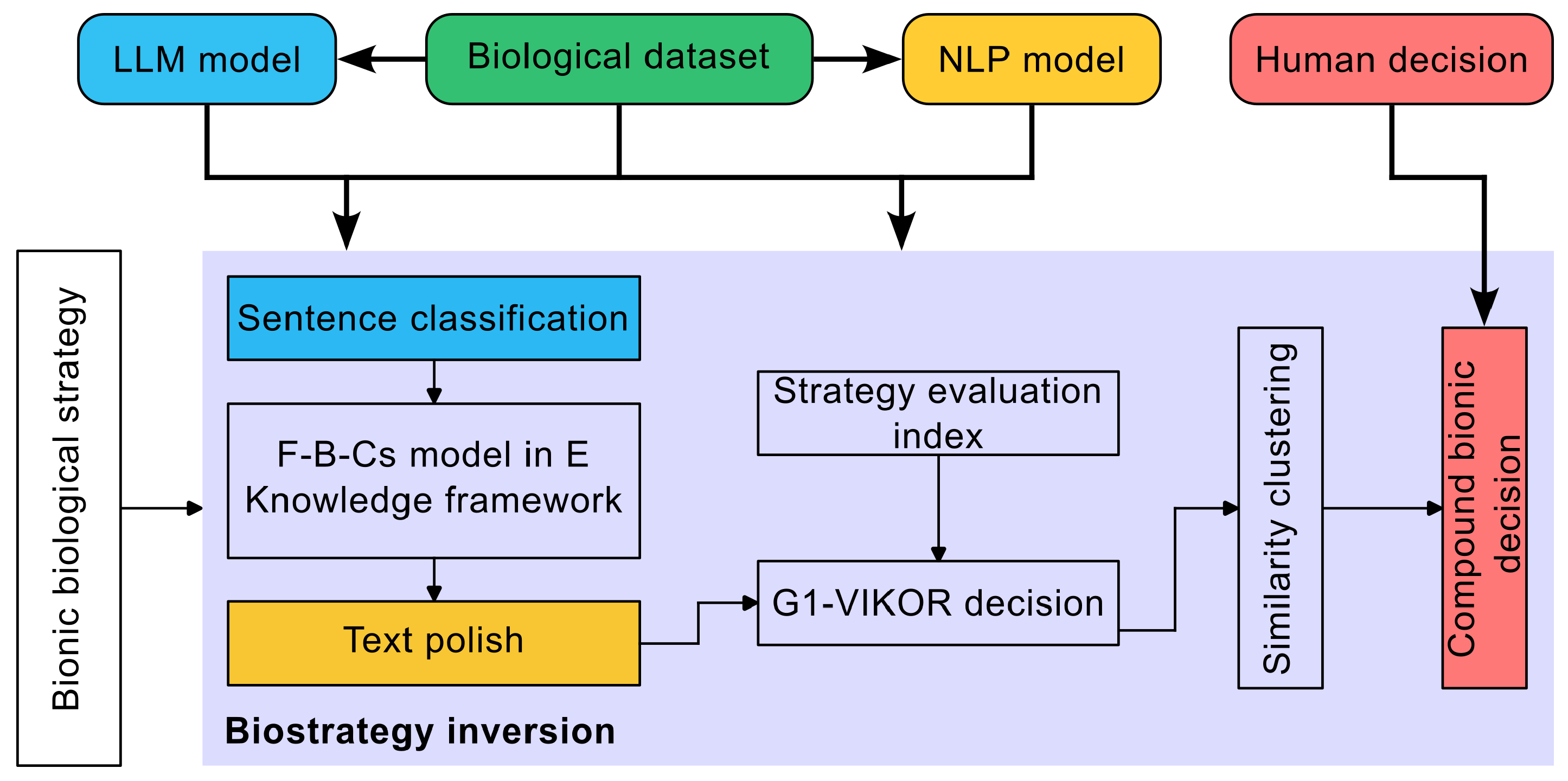
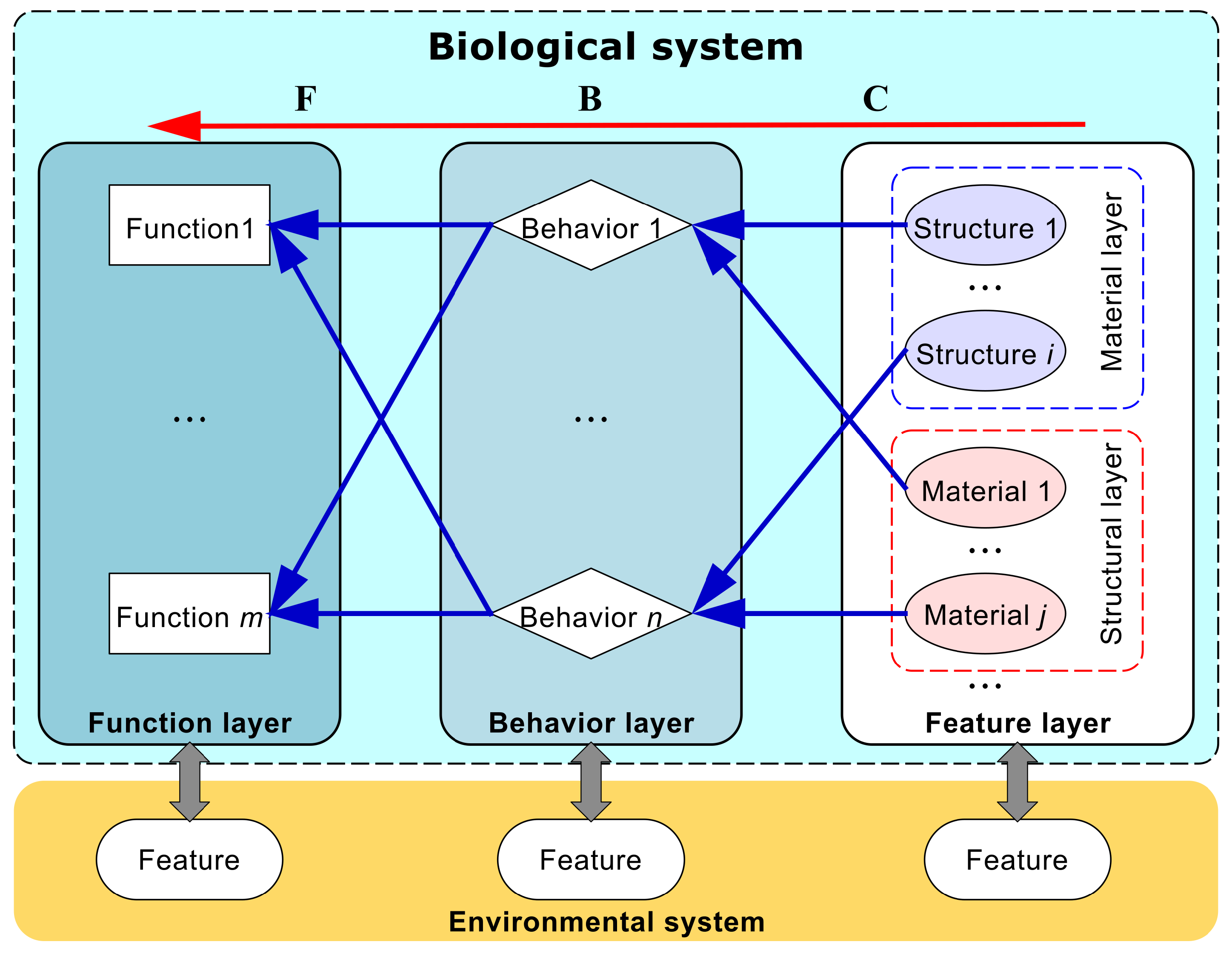

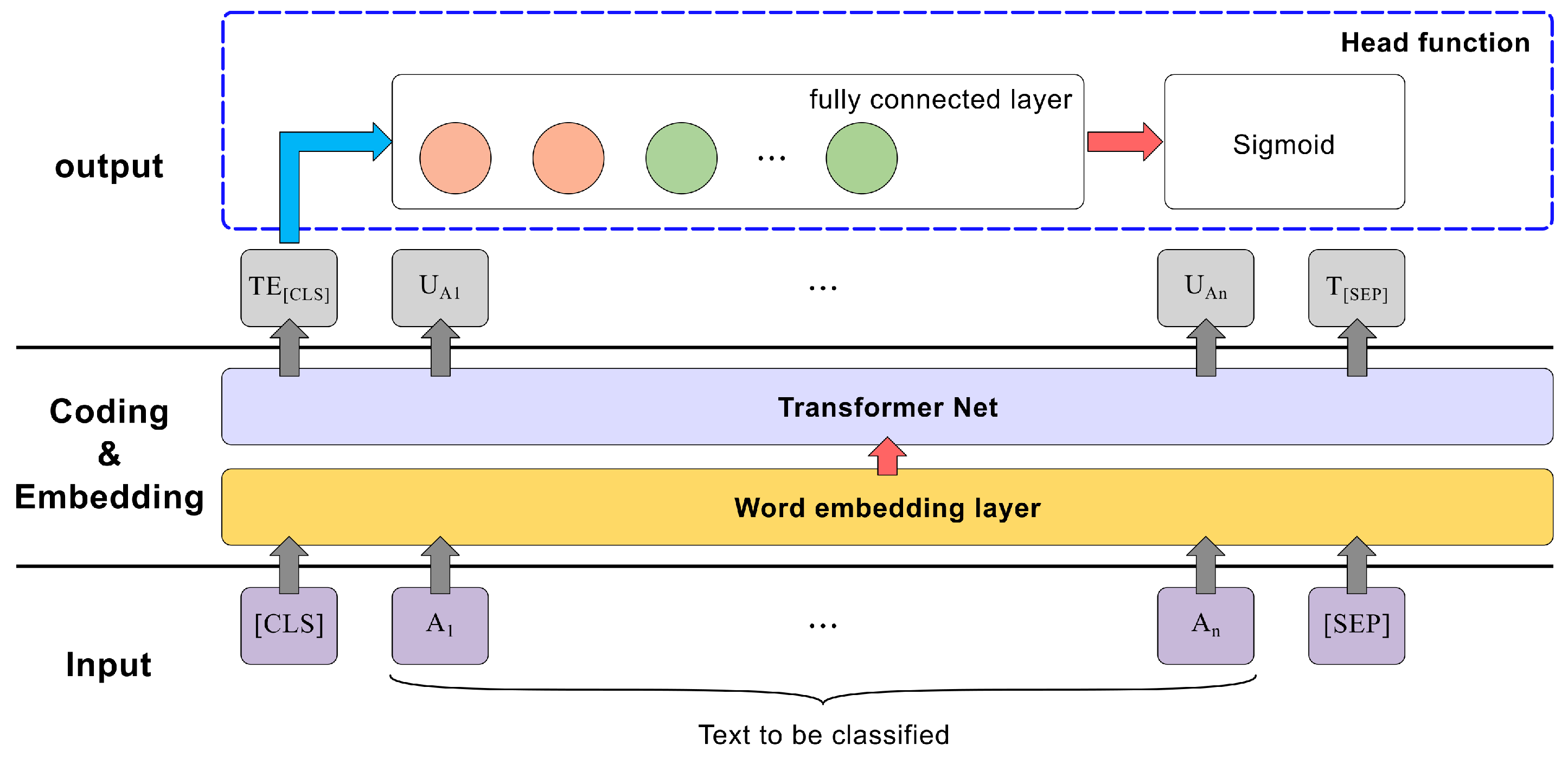
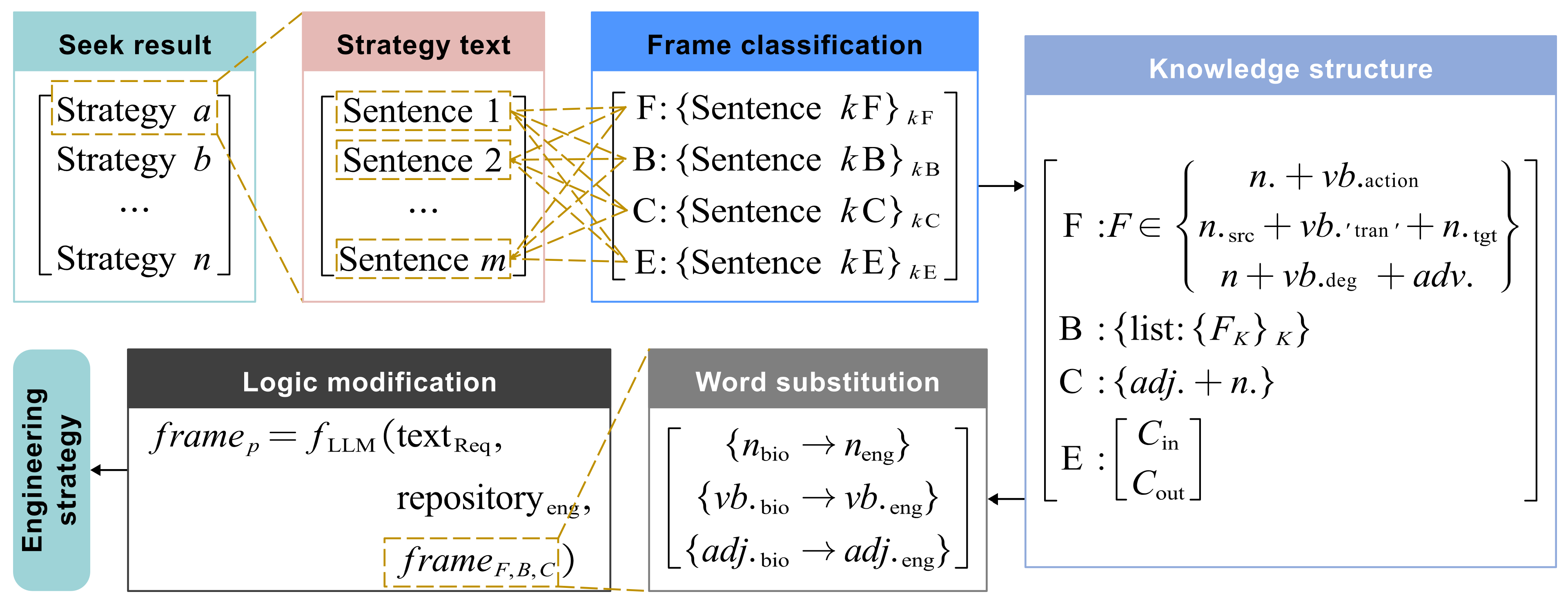
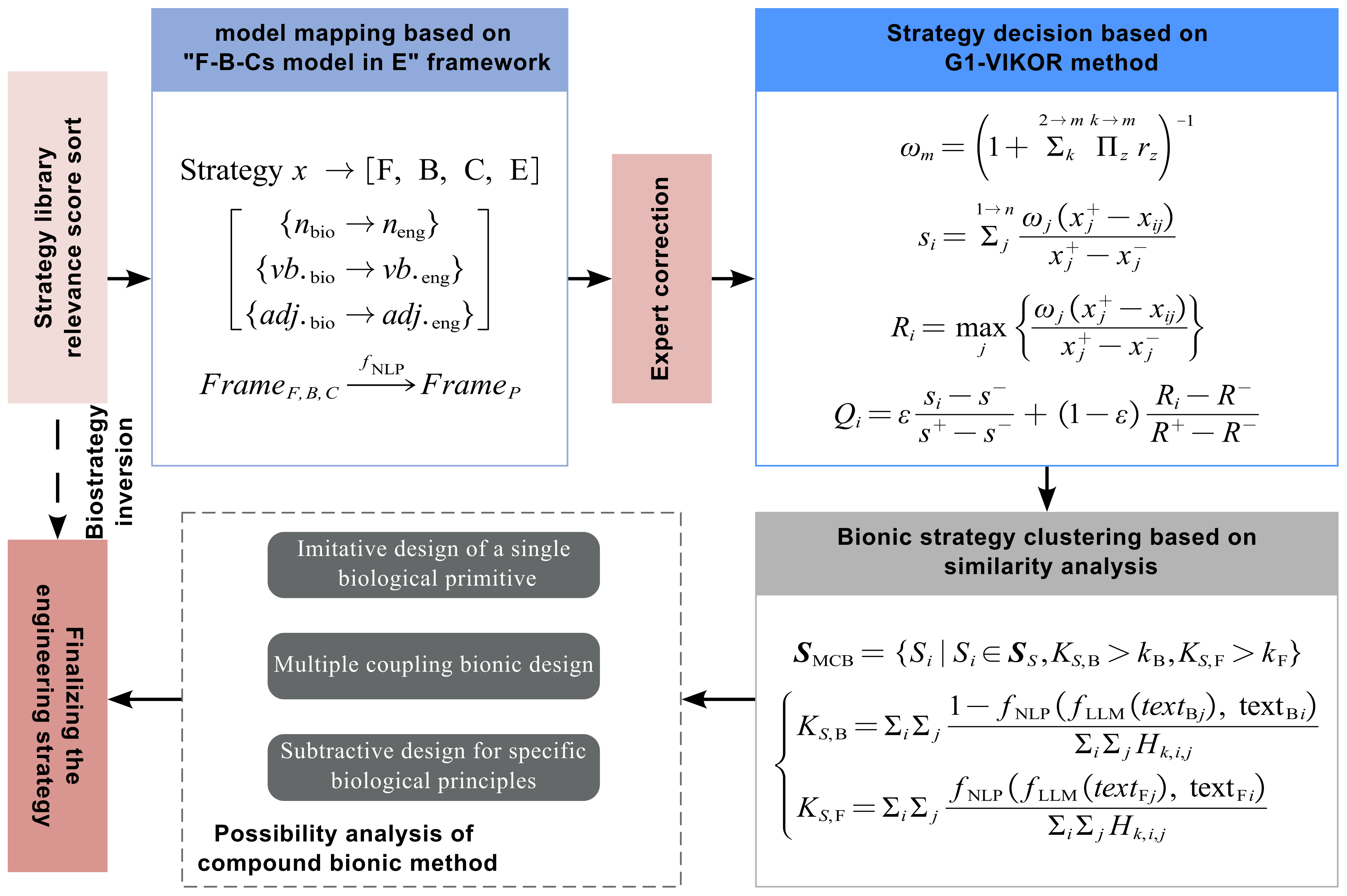
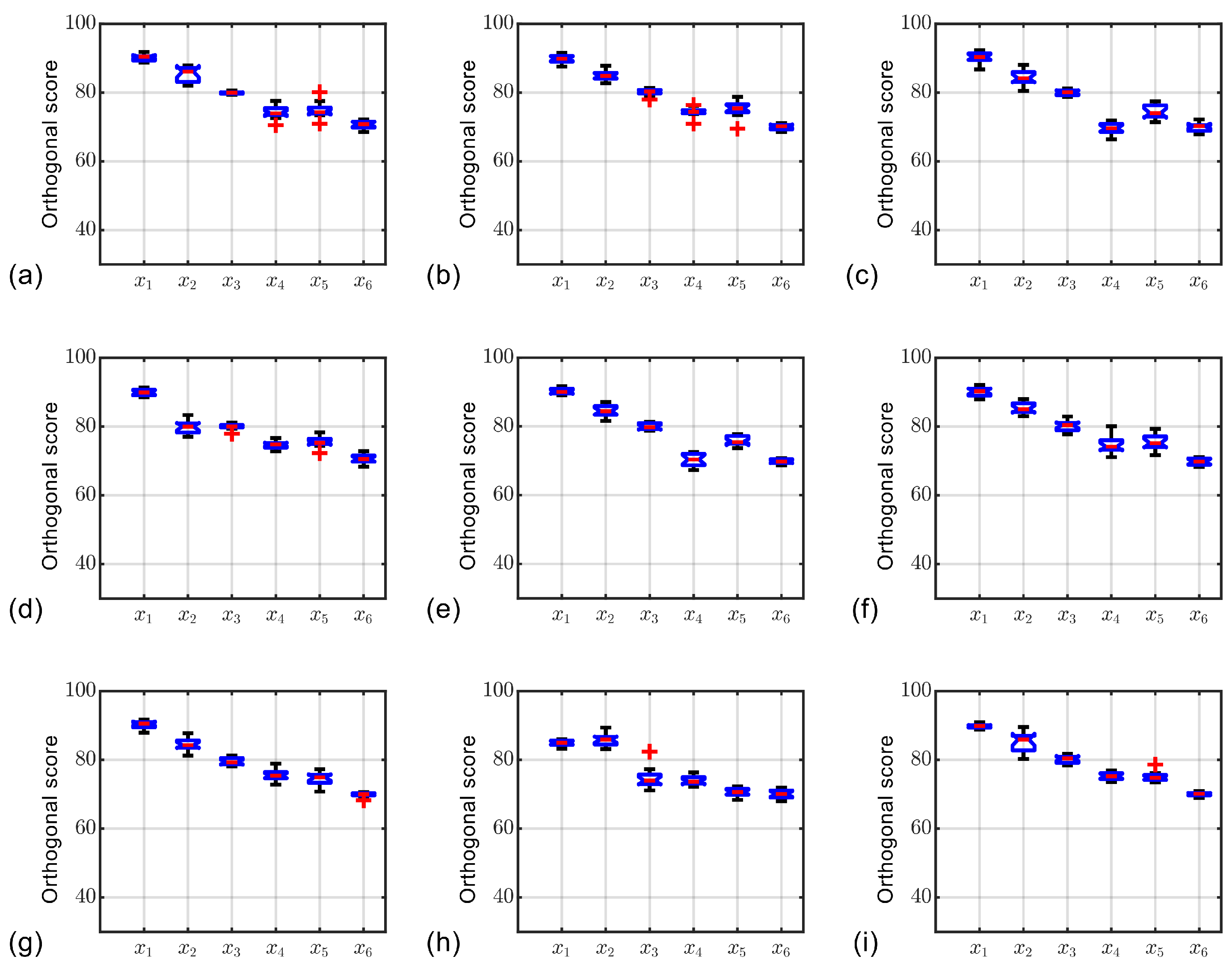
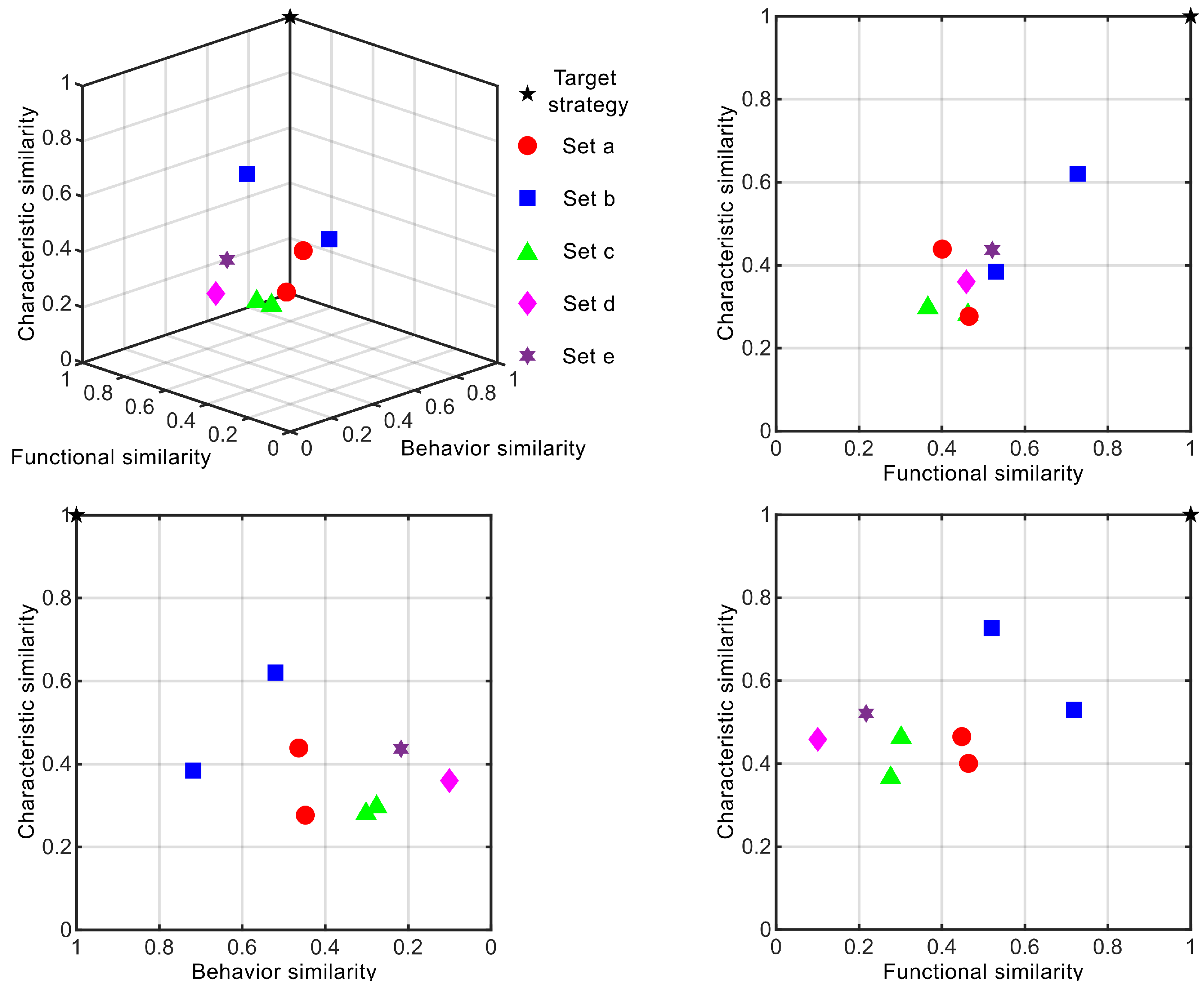
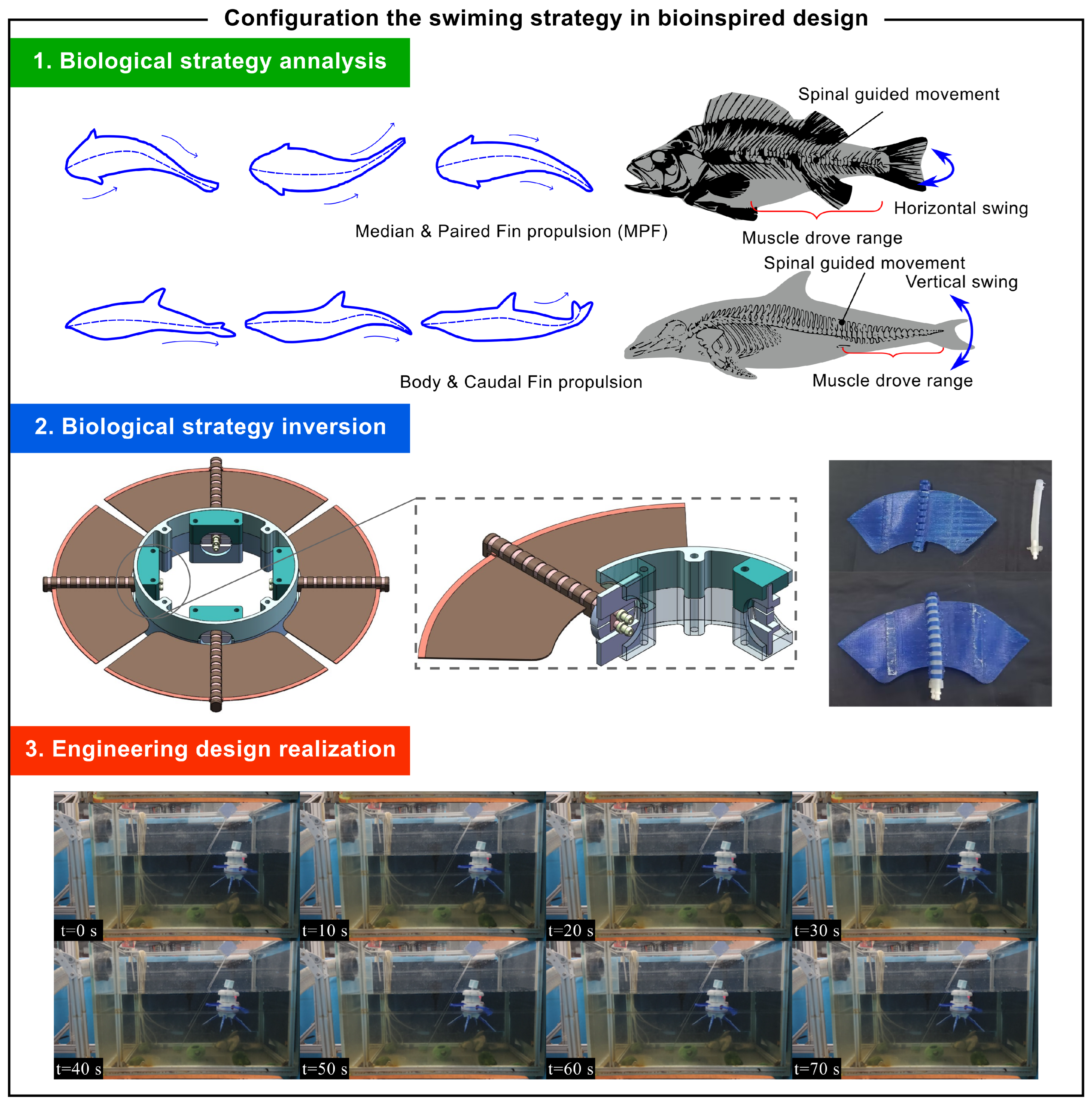
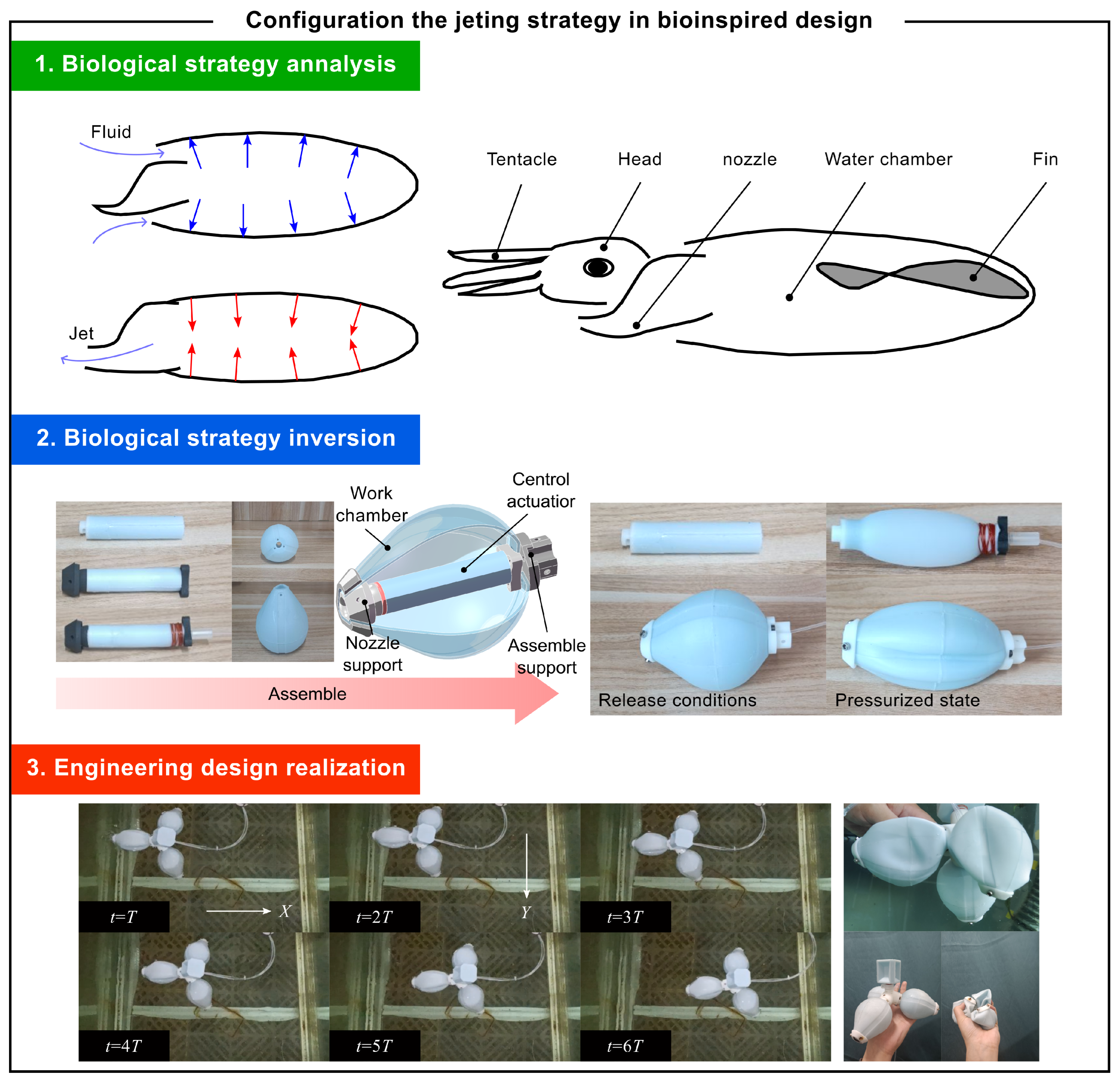
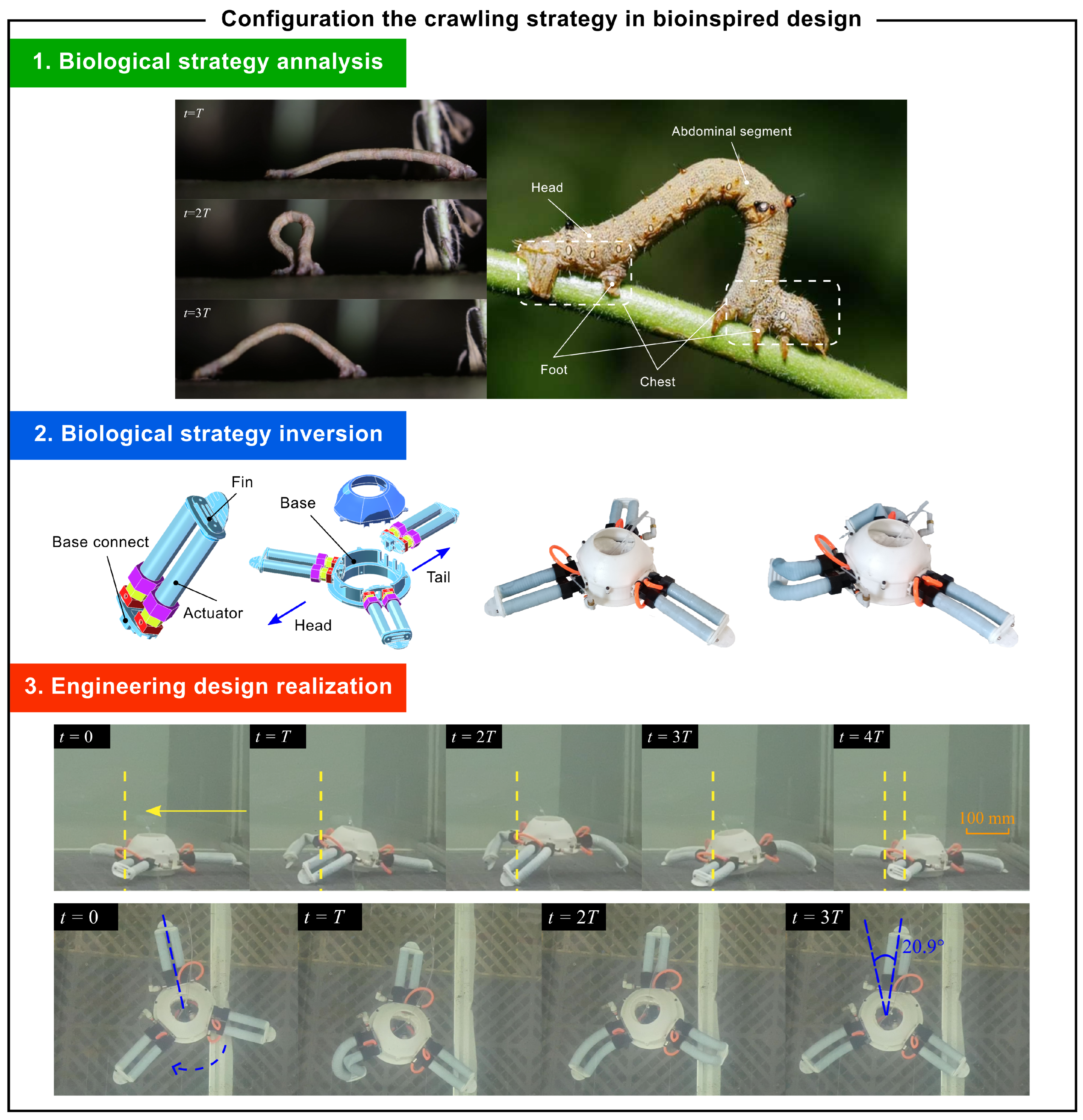
| Model Type | Representative Model | Focus | Limitations |
|---|---|---|---|
| Cognitive Model | SBF Model |
|
|
| Causal Model | SAPPhIRE Model |
|
|
| Functional Model | FCKM Model |
|
|
| Parameter | Value |
|---|---|
| Learning rate | |
| Epoch | 17 |
| Batch size | 64 |
| Optimizer | Adam |
| Precision | Recall | Accuracy | F1-Score |
|---|---|---|---|
| 0.85 | 0.77 | 0.89 | 0.81 |
| Definition | |
|---|---|
| 1 | Indicator is of equal importance to Indicator . |
| 1.2 | Indicator is slightly more important than Indicator . |
| 1.4 | Indicator is significantly more important than Indicator . |
| 1.6 | Indicator is much more important than Indicator . |
| 1.8 | Indicator is extremely more important than Indicator . |
| NO. | Biomimetic Strategies | Rank | Q | Set |
|---|---|---|---|---|
| 1 | Marine Fish Propulsion Optimized by Tail Undulation and Fluid Dynamics | 1 | 0.0635 | b |
| 2 | Jellyfish Movement Optimized by Pulsatile Propulsion and Fluid Sensing | 3 | 0.2143 | c |
| 3 | Squid Movement Driven by Biological Jet Propulsion | 8 | 0.7932 | c |
| 4 | Cnidarians Move via Hydrostatic Skeleton and Muscle Coordination | 7 | 0.4880 | a |
| 5 | Copepod Propulsion via Asynchronous Cilia and Microstructure Integration | 6 | 0.3476 | a |
| 6 | Echinoderms Move by Water Vascular and Collagen–Muscle Integration | 5 | 0.2528 | e |
| 7 | Marine Mammals’ Swimming with Fluid Dynamics and Energy Storage | 4 | 0.2518 | b |
| 8 | Physalia physalis Drifts via Asymmetrical Float and Tentacle Coordination | 9 | 1.0851 | d |
| 9 | Octopus Buoyancy Control via Gill-Heart and Mantle Muscle Coordination | 2 | 0.1568 | b |
| 0.2048 | 0.2458 | 0.2048 | 0.0790 | 0.0948 | 0.1707 |
Disclaimer/Publisher’s Note: The statements, opinions and data contained in all publications are solely those of the individual author(s) and contributor(s) and not of MDPI and/or the editor(s). MDPI and/or the editor(s) disclaim responsibility for any injury to people or property resulting from any ideas, methods, instructions or products referred to in the content. |
© 2025 by the authors. Licensee MDPI, Basel, Switzerland. This article is an open access article distributed under the terms and conditions of the Creative Commons Attribution (CC BY) license (https://creativecommons.org/licenses/by/4.0/).
Share and Cite
Chen, S.; Xu, H.; Zhang, X.; Jiang, T.; Ma, Z. Inversion of Biological Strategies in Engineering Technology: A Case Study of the Underwater Soft Robot. Biomimetics 2025, 10, 362. https://doi.org/10.3390/biomimetics10060362
Chen S, Xu H, Zhang X, Jiang T, Ma Z. Inversion of Biological Strategies in Engineering Technology: A Case Study of the Underwater Soft Robot. Biomimetics. 2025; 10(6):362. https://doi.org/10.3390/biomimetics10060362
Chicago/Turabian StyleChen, Siqing, He Xu, Xueyu Zhang, Tian Jiang, and Zhen Ma. 2025. "Inversion of Biological Strategies in Engineering Technology: A Case Study of the Underwater Soft Robot" Biomimetics 10, no. 6: 362. https://doi.org/10.3390/biomimetics10060362
APA StyleChen, S., Xu, H., Zhang, X., Jiang, T., & Ma, Z. (2025). Inversion of Biological Strategies in Engineering Technology: A Case Study of the Underwater Soft Robot. Biomimetics, 10(6), 362. https://doi.org/10.3390/biomimetics10060362






